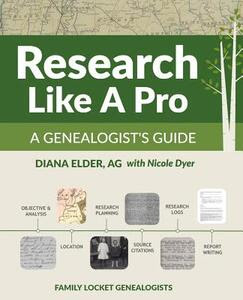Pain Avoidance in Genealogy Research
Odd title to this blog, I know! But I've been learning some things in our latest study group, where we are reading "Research Like A Pro" by Diana Elder and we're following the strategy (RLP). I can't say that some of it is not painful. For instance, while compiling a Locality Research Guide I wanted to follow those meaty links I was finding so much! However, that step comes after we finish the critical parts of those research guides, and get into the Research Planning step. Here are the Research Planning steps, restated in my own words:
 |
| Research Like A Pro cover |
1. State a clear objective, revised if necessary.
2. Summarize the important known facts
3. Clear, specific hypothesis (or multiple if necessary).
4. Identify the best sources to pursue to test your hypothesis/es.
5. Prioritize your research strategy.
Of course each of us chose a research subject before we began meeting together, and began to refine a research objective, summarize the sources we already had into a timeline, and began creating citations for those sources. So far, so good! Not too much pain yet. Yes, citations can be a pain, but they get easier with practice.
I found creating the locality guides eye-opening, and sort of fun in the beginning. Then as we began to share them with one another, I saw sources and databases others had added to their guides, and each of mine began to grow, and of course become more complete.
Here's the painful part -- each is jam-packed with places I want to research! However, knowing what's ahead, I see that holding back, like waiting for Christmas to open the tempting presents under the tree, will be best. Also, when I realized I needed another, because my William McBee moved from East Tennessee to Greene County Illinois, then to Harrison County Missouri, north to Decatur County Iowa for a short while and then to Siskiyou County California to dig for gold. And perhaps he is buried in Coos County Oregon! Because I have no idea where he died, I'll need to search everywhere, but especially California and Oregon where he had family. Creating that Oregon guide has been painful.
 |
| from https://youririshheritage.com/lessons/genealogical-proof-standard/ |





Comments
Post a Comment